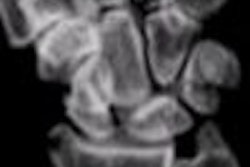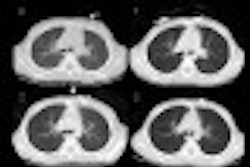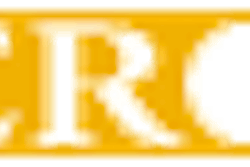On all counts, the CT market has evolved. Whether it's evaluated from the perspective of size, technology, target markets, or competitors, the CT industry has completely redefined itself.
It has grown in breadth and depth, delivering revamped technology with new capabilities to new customers. At the level of size, CT sales are pushing boundaries never seen before within this segment.
The multislice evolution has arrived in grand style. And at the application and capability level, innovations have opened the doors to new target markets. Consolidation has rapidly changed the market dynamics. The new pulse of CT has profoundly impacted the current market and is guaranteed to continue shaping its future.
Surging sales
In the 1990s, sales of CT pushed onwards and upwards. The market seemed to peak in the late 1990s with the maturity of spiral CT, the most significant evolution prior to multislice. Following the trend of most medical imaging modalities, modest levels of innovation resulted in only modest sales growth during this period. The lack of groundbreaking innovations in the late 1990s produced nearly flat sales growth in 1998.
In fact, without the introduction of multislice CT (MSCT), market sales growth would have turned negative by 2000. However, MSCT quickly stole the spotlight beginning in 1999, and has held it ever since.
The CT market maintained annual growth rates greater than 20% between 1999 and 2001 -- quite a feat for a technology with roots more than three decades old. For the first time ever, CT sales topped $1 billion during this period of rapid expansion.
An evolution, not a revolution
The catalyst for rapid market growth has been found not only in the development of new technology, but more important, in the development of a whole range of improvements that have evolved from CT’s technological base. MSCT scanners have not simply increased scan speed, but have taken several strides towards volumetric scanning.
Recent improvements include the ability to produce thinner slices, more slices, faster scan speeds, faster processing speeds -- and often, better image quality. In turn, these enhancements fuel the growth in clinical applications for CT. Some of these procedures aren't completely new to CT, but the image quality now obtained may be far superior to its predecessor.
For example, cardiac calcium scoring was previously performed on helical scanners, but was no match for images produced on electron beam tomography (EBT) systems due to lower image quality and artifact obstruction. The advent of MSCT, however, allows even complex motion studies to be completed with a relative rate of satisfaction among end-users. Collectively, radiologists and their colleagues have embraced these advancements.
MSCT and the cardiology beat
The dynamic application capabilities afforded by MSCT not only allow for increased utilization among its traditional end-users -- radiologists --but also offer an enticing modality for cardiologists as well. Technology developments within the field of cardiology continue to advance, as cardiovascular disease remains the number-one cause of mortality within the U.S. However, for all of the advances made within cardiology, few have utilized the power of CT until now.
For decades, CT's inability to adequately capture rapidly moving organs such as the heart has effectively prevented it from entering the cardiology realm. With the advent of MSCT and the improved capability to perform single breath-hold screening, capturing freeze-frame images of the heart has become an important gateway into this sector.
CT is now projected to replace invasive cardiac procedures with noninvasive imaging. While its market potential within cardiology is difficult to measure at this time, it's expected to be substantial. The primary driver of the penetration into this new market niche is and will continue to be the development of relevant clinical applications that hold utility for cardiologists.
More consolidation, more competition
As the battle for technological innovation heats up, so does the race to be the first to market and to introduce the latest and greatest MSCT model. With the potential of the CT market most readily available to those who develop the most advanced technologies, a number of competitors have turned to acquisition strategies in order to progress without investing large sums in R&D and marketing.
Consolidation has dotted the competitive landscape during the past several years, reducing the number of competitors within the market. This trend began in 1998 when Picker International purchased the CT division of Elscint. Elscint was the first to offer a multislice CT scanner with its dual-slice CT-Twin scanner.
Then Picker International became Marconi Medical Systems, which was subsequently purchased by Philips Medical Systems in the fall of 2001. Other consolidations include the acquisition of EBT developer Imatron by GE Medical Systems, also in late 2001. This chain of consolidations has tightened the race resulted in a tighter race in the CT marathon and has also created much larger barriers to entry.
Those without a solid MSCT product line -- either available or in development -- cannot expect to compete with the formidable giants, which have recently gained strength. As consolidation trends settle, manufacturers will be able to focus greater efforts on R&D and marketing in order to capitalize on the vast potential that lies within the CT market.
By Monali PatelAuntMinnie.com contributing editor
April 5, 2002
Monali Patel is a medical imaging industry analyst at Frost & Sullivan, a San Jose, CA-based market consulting and training firm. The data and analysis in this article are included in a recently published Frost & Sullivan report on the CT market: "The U.S. Computed Tomography Market (A073-50)." For more information, please call Charlie Turnbow at 210-247-2472 or send an e-mail to [email protected].
Copyright © 2002 AuntMinnie.com



















